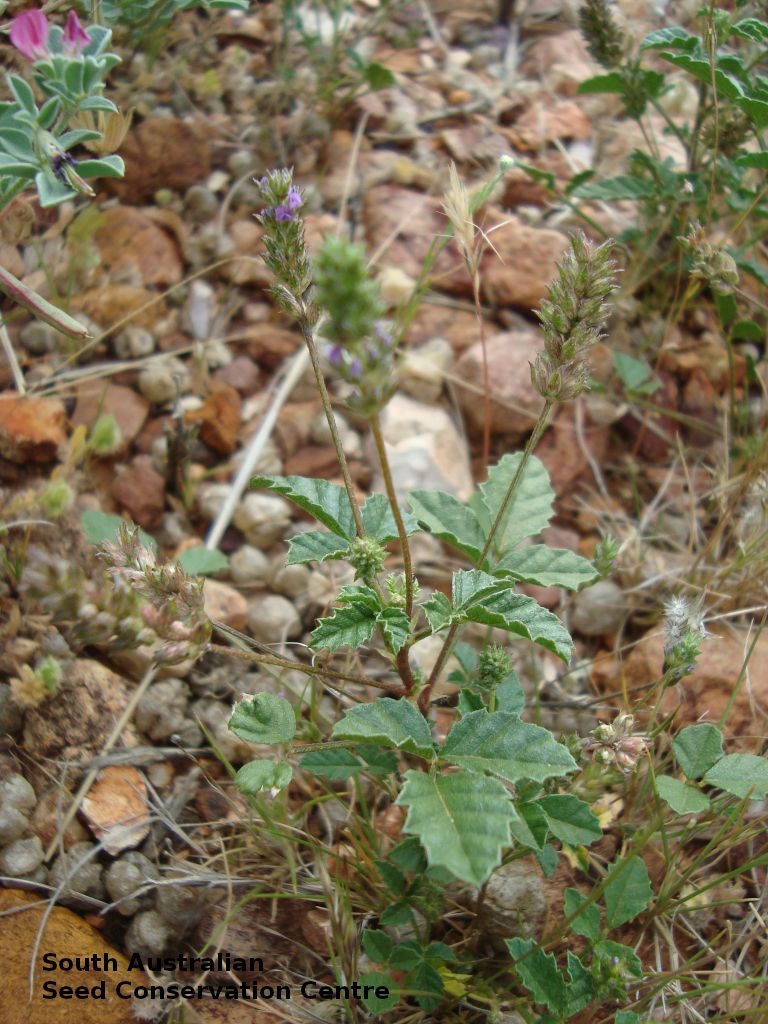
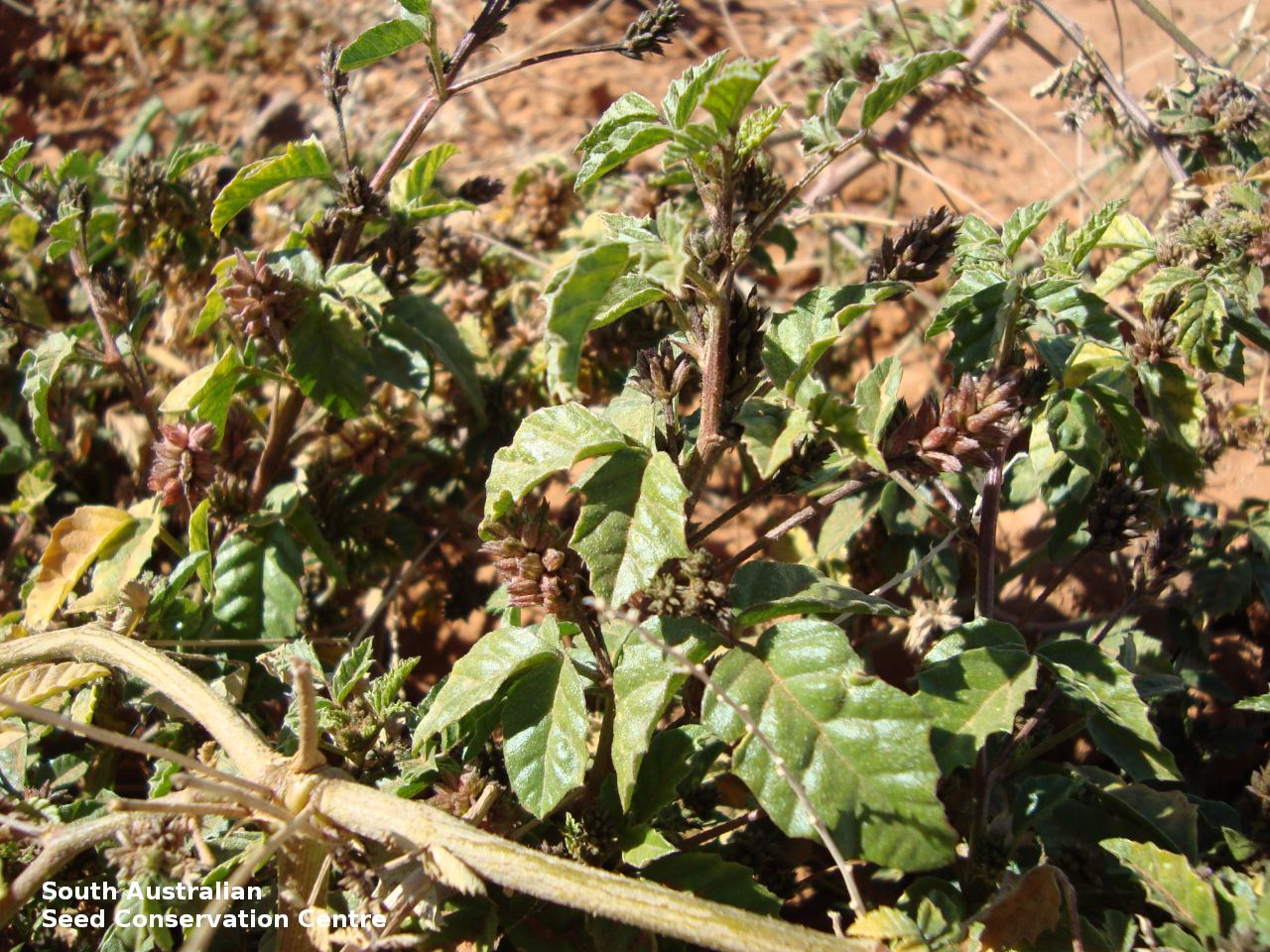
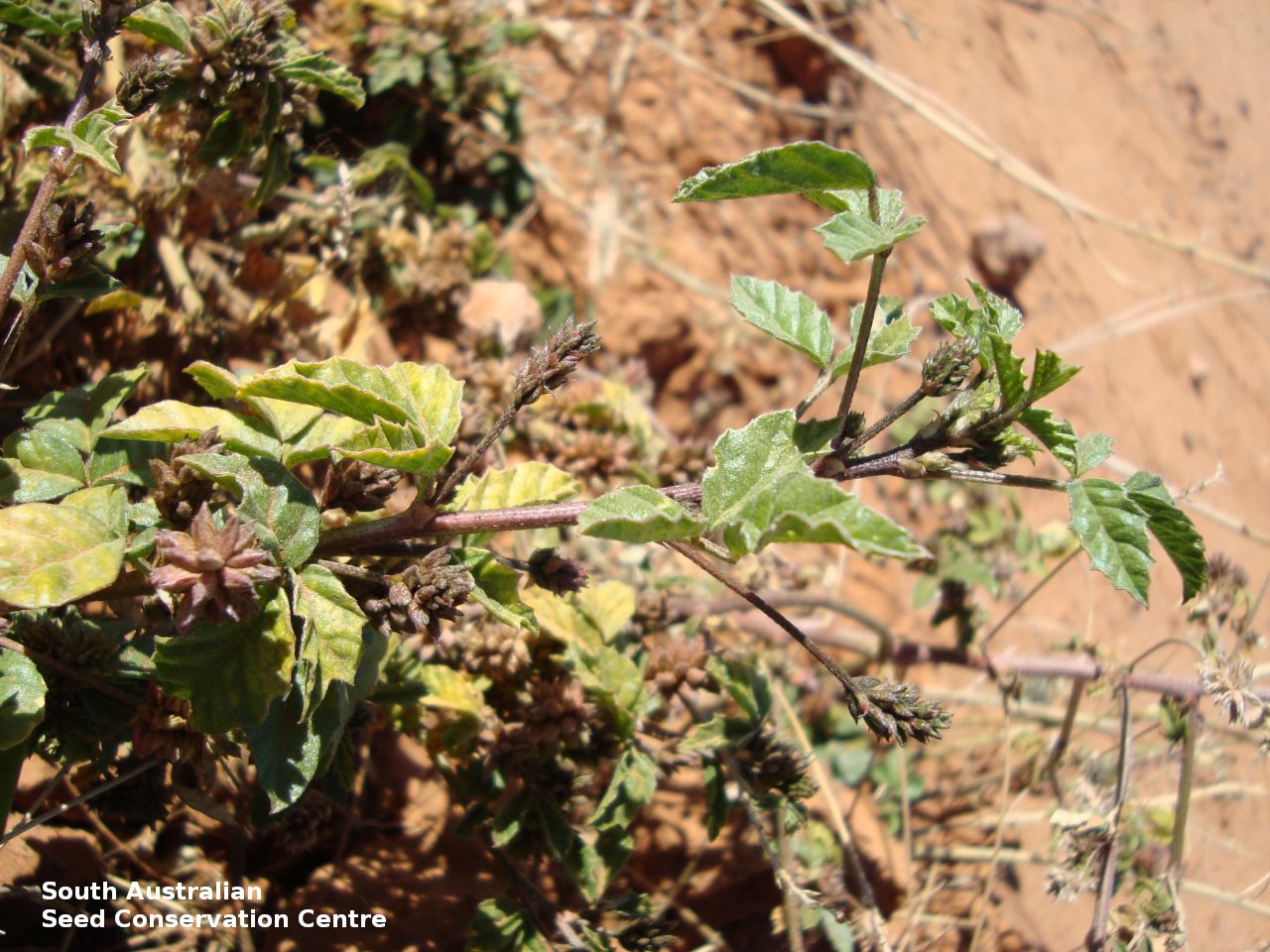
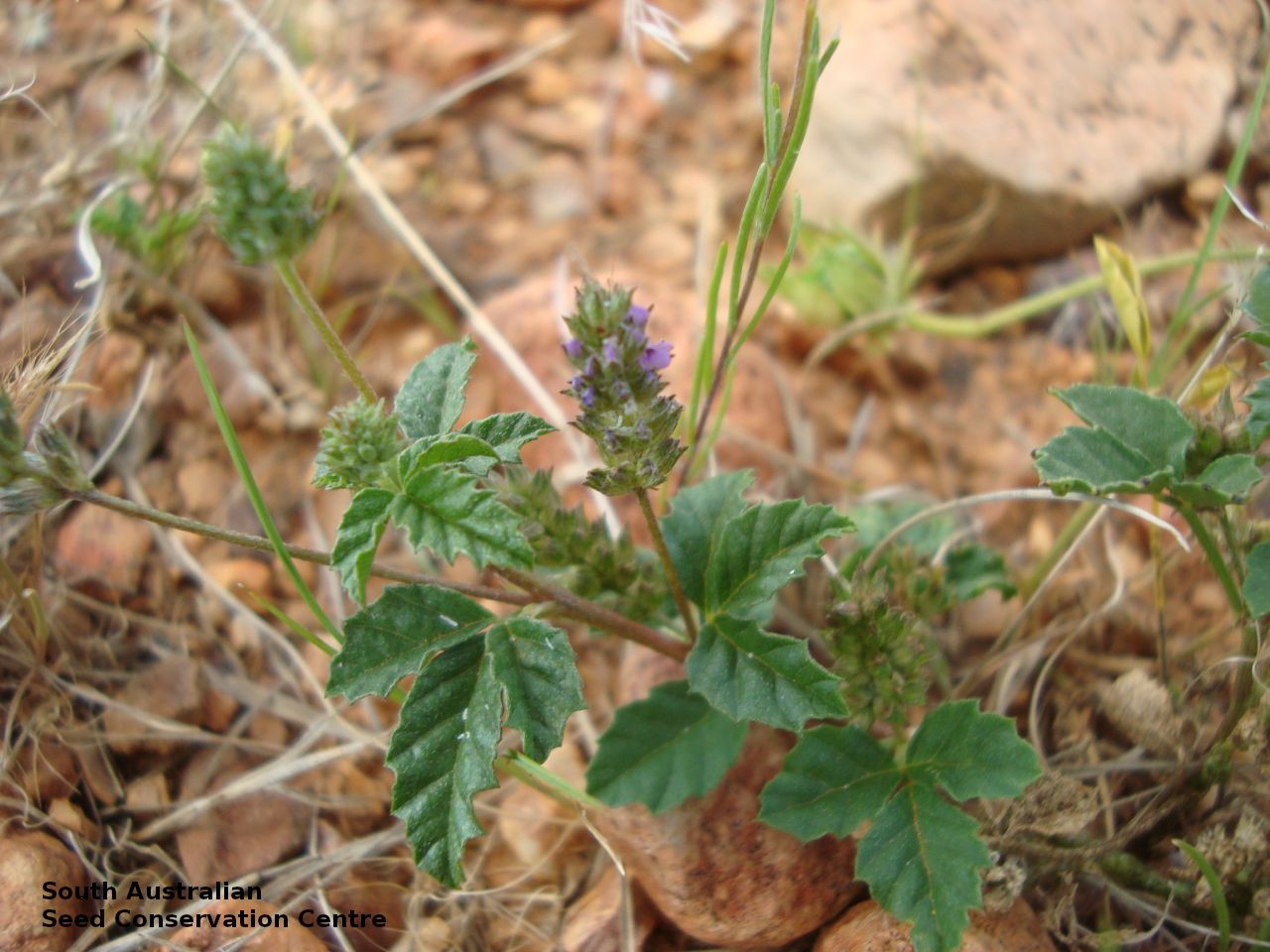
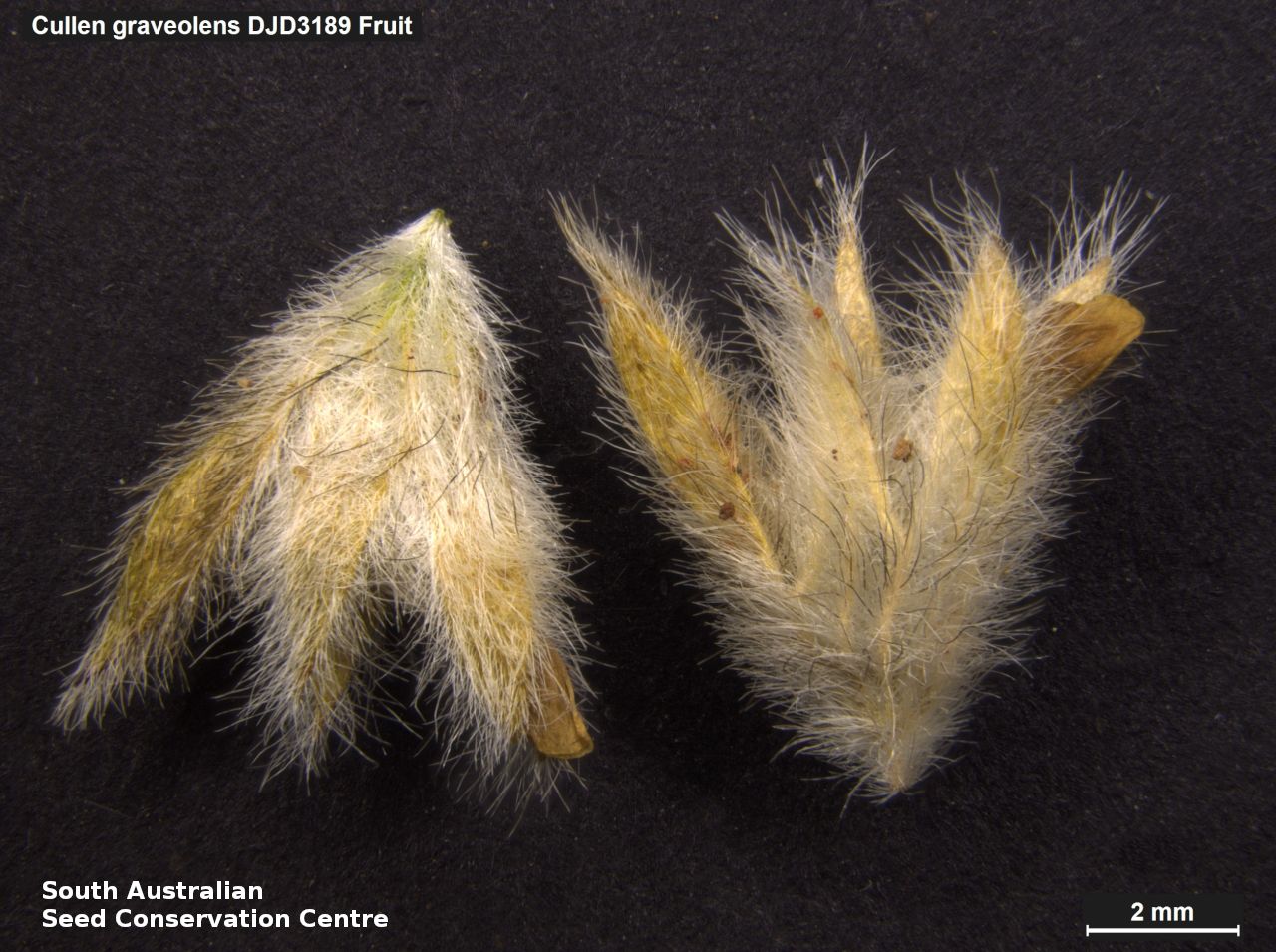
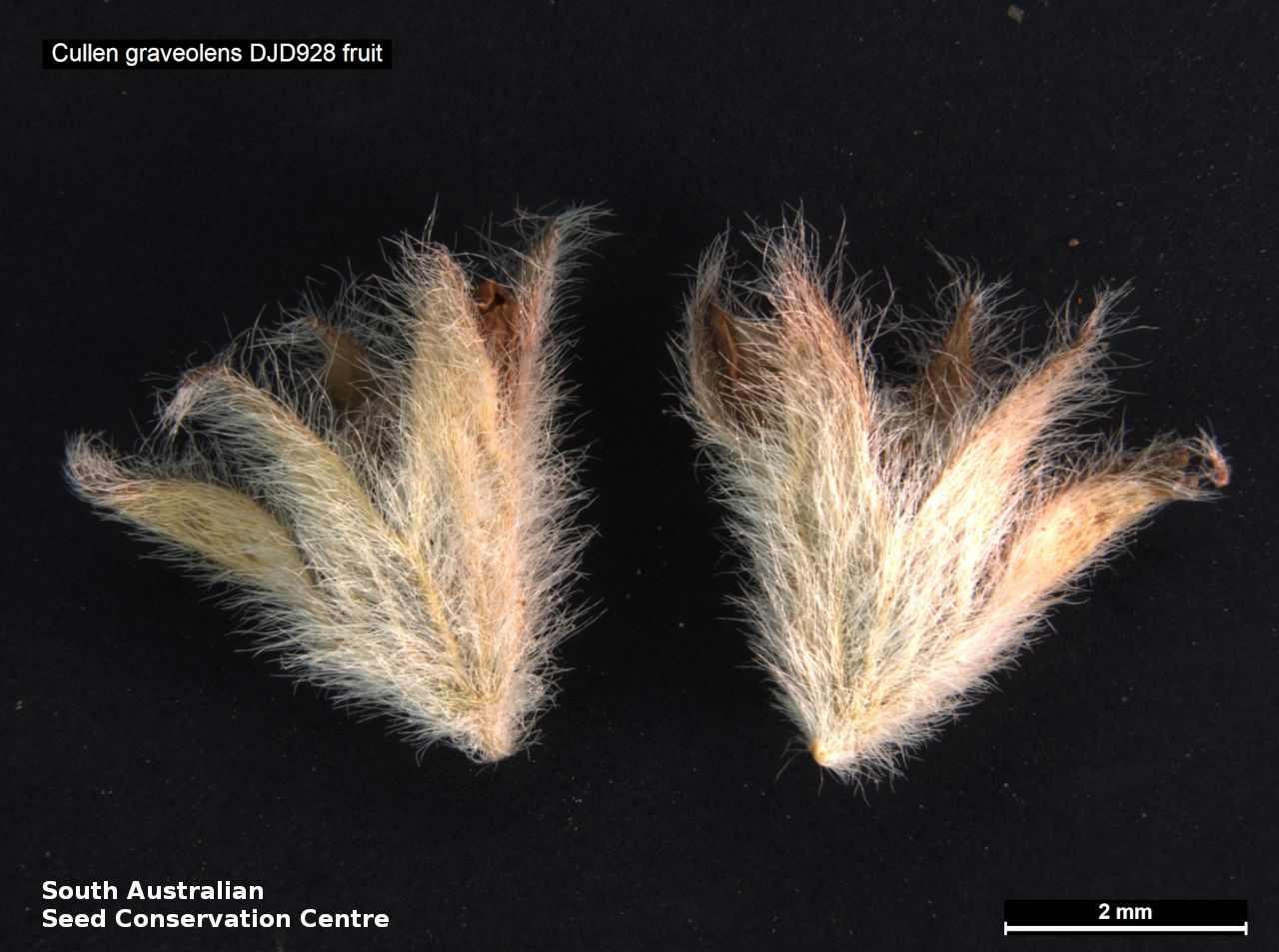
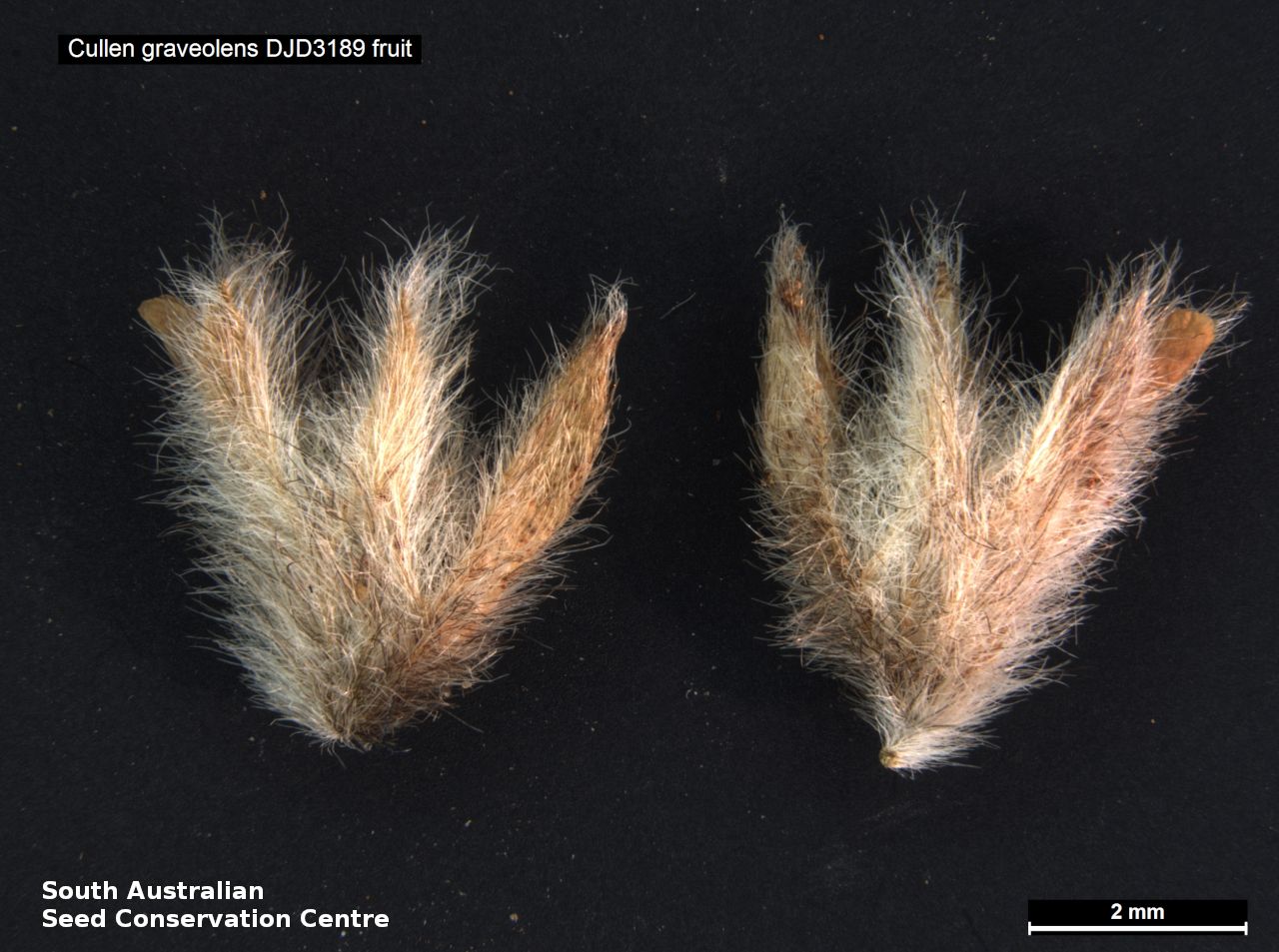
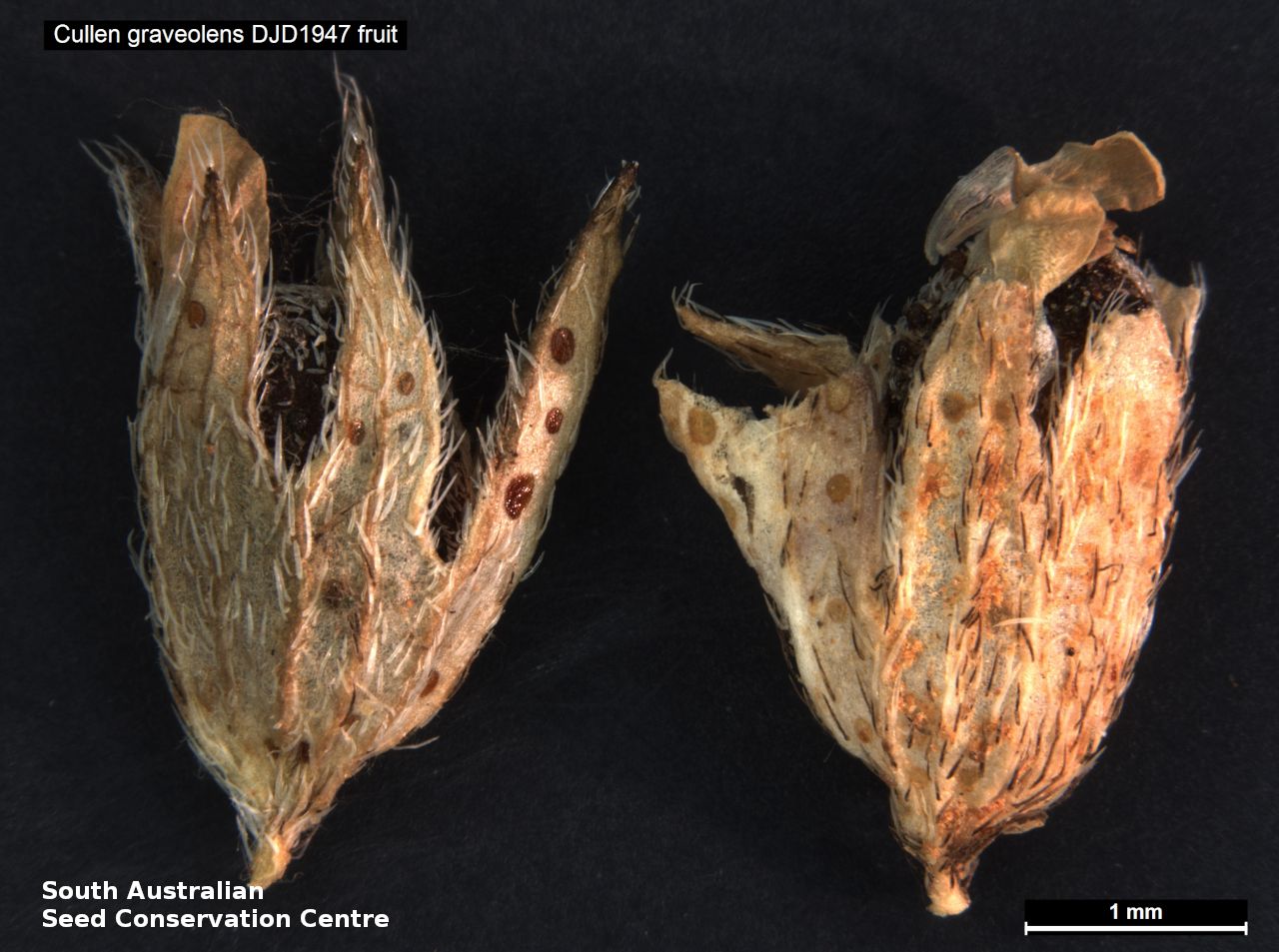
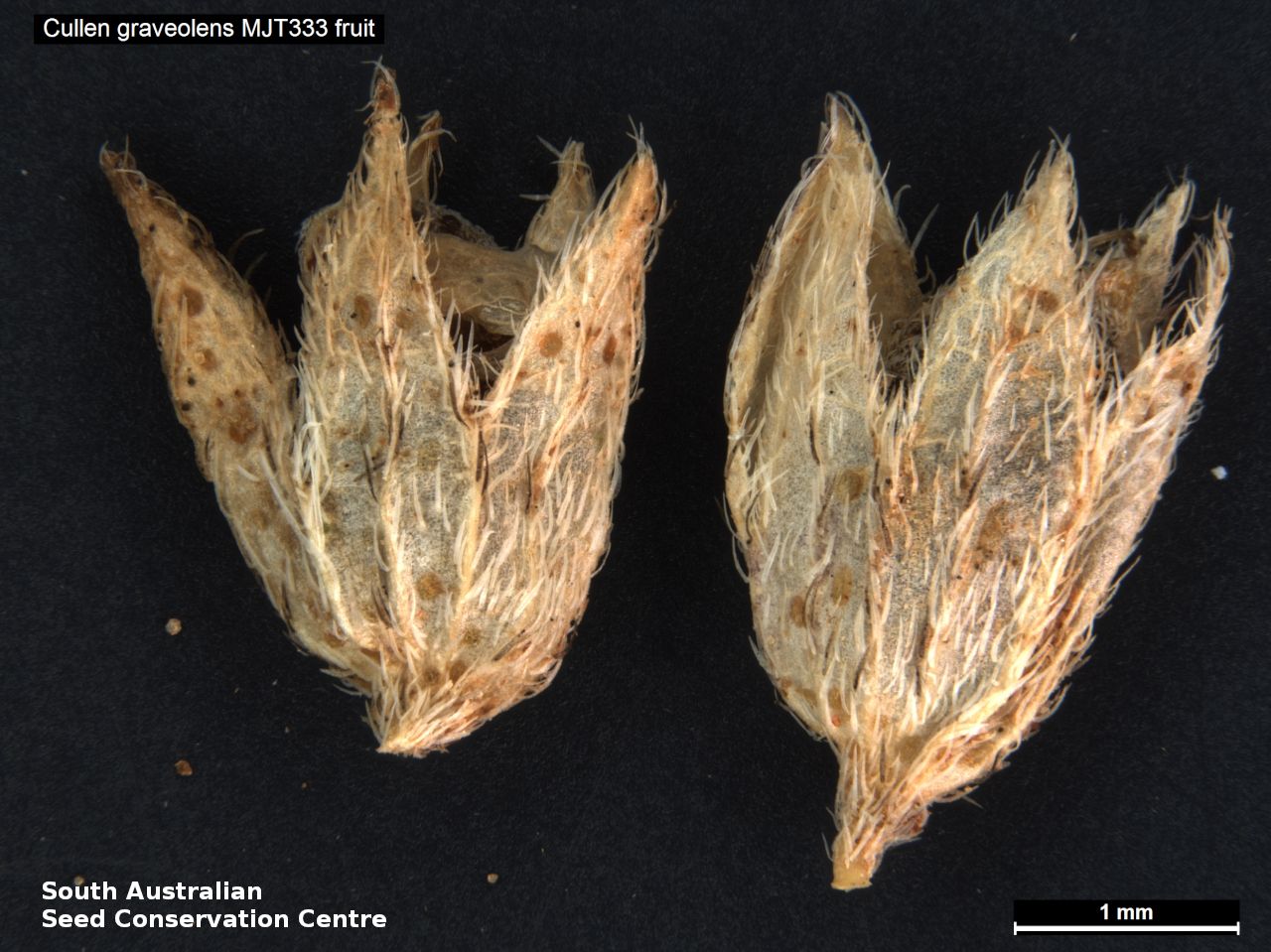
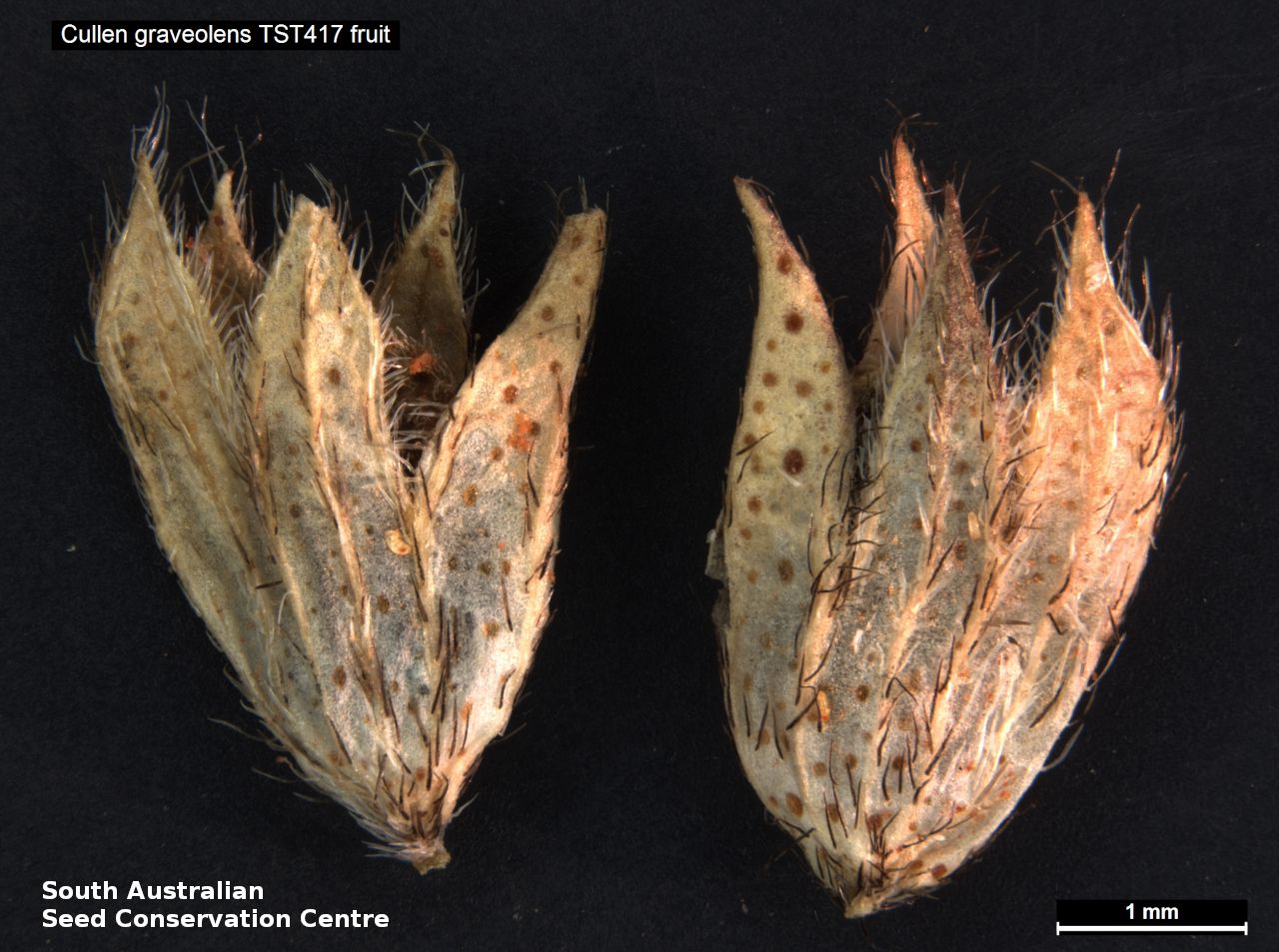
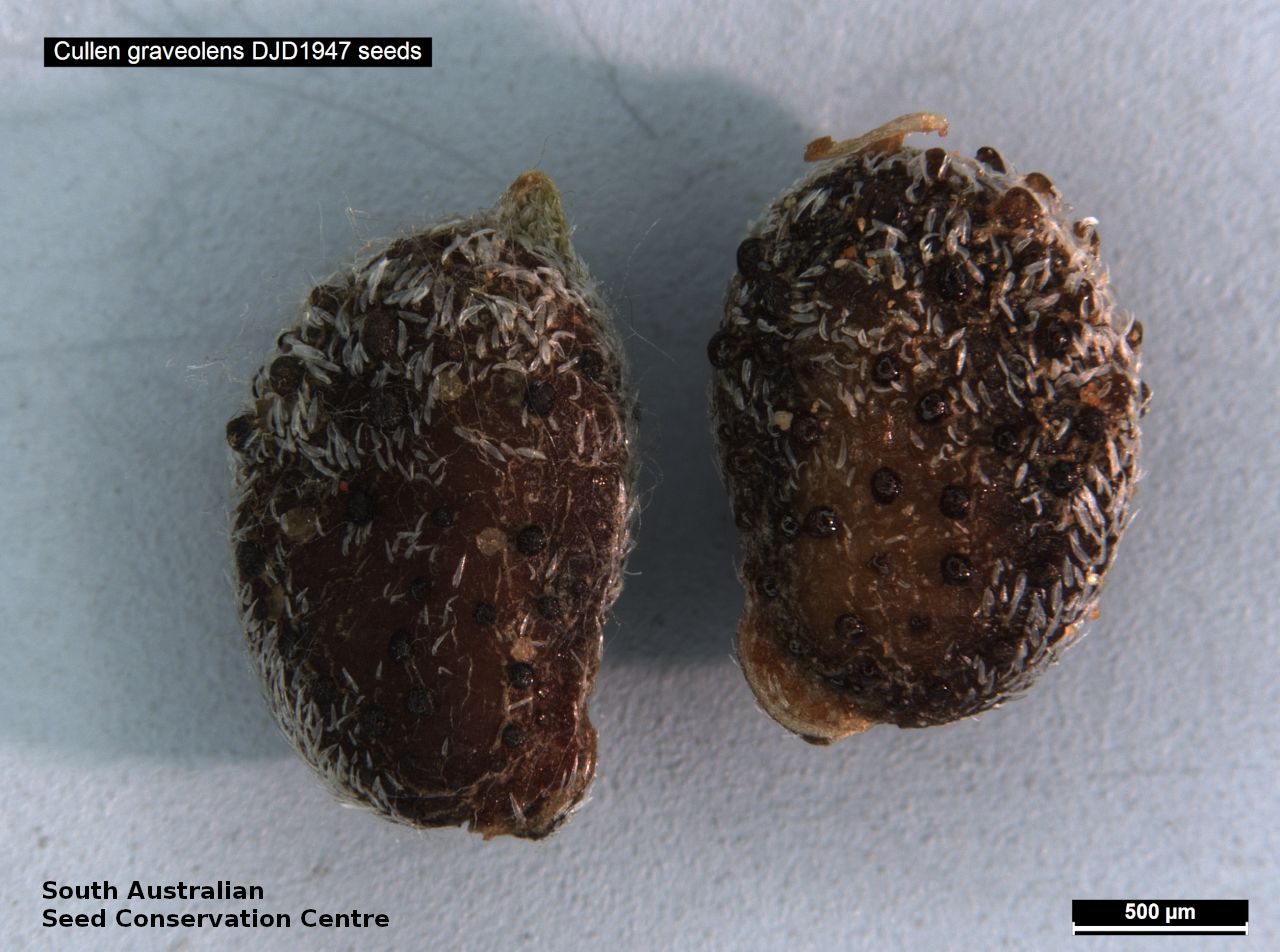
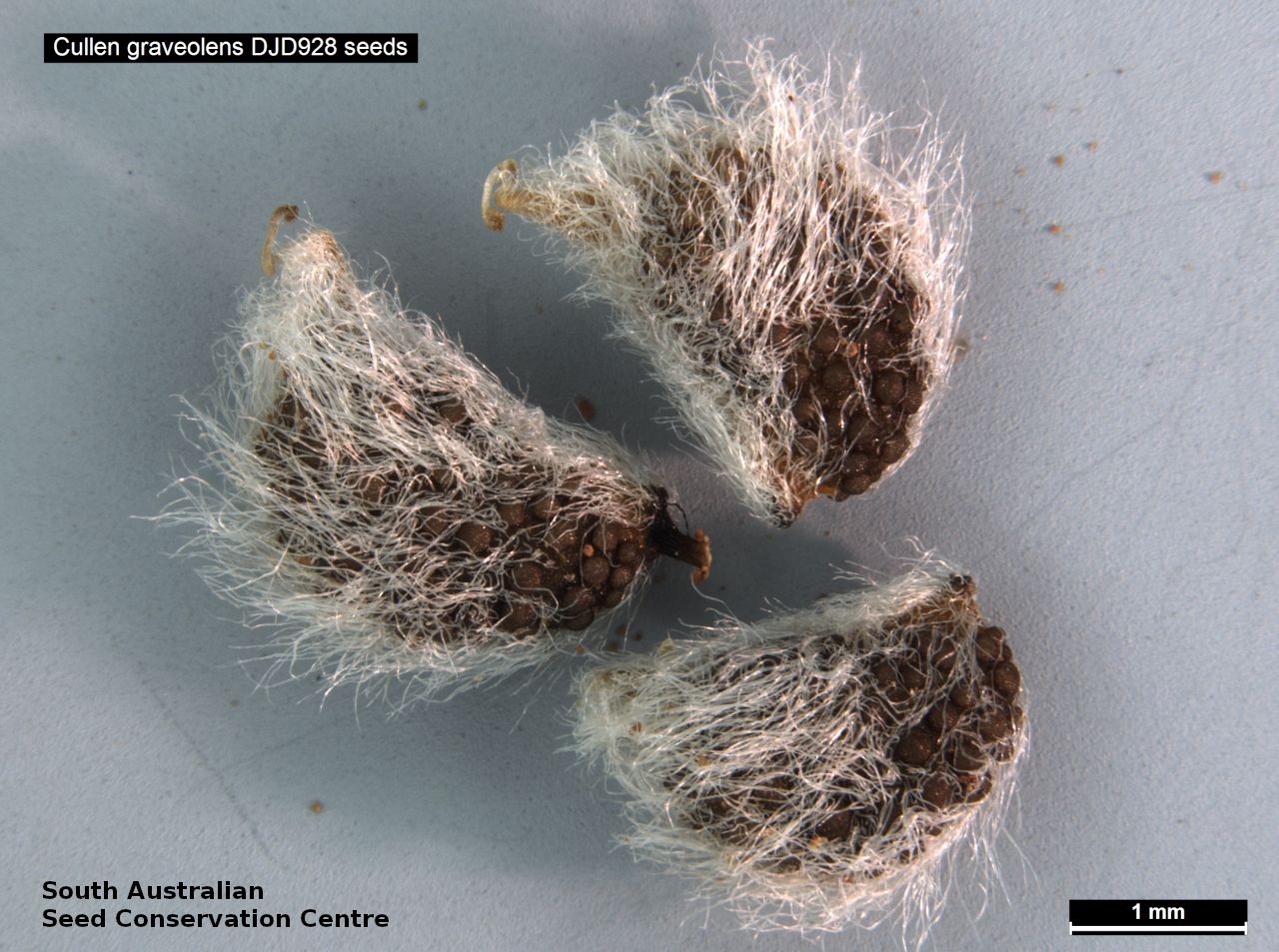
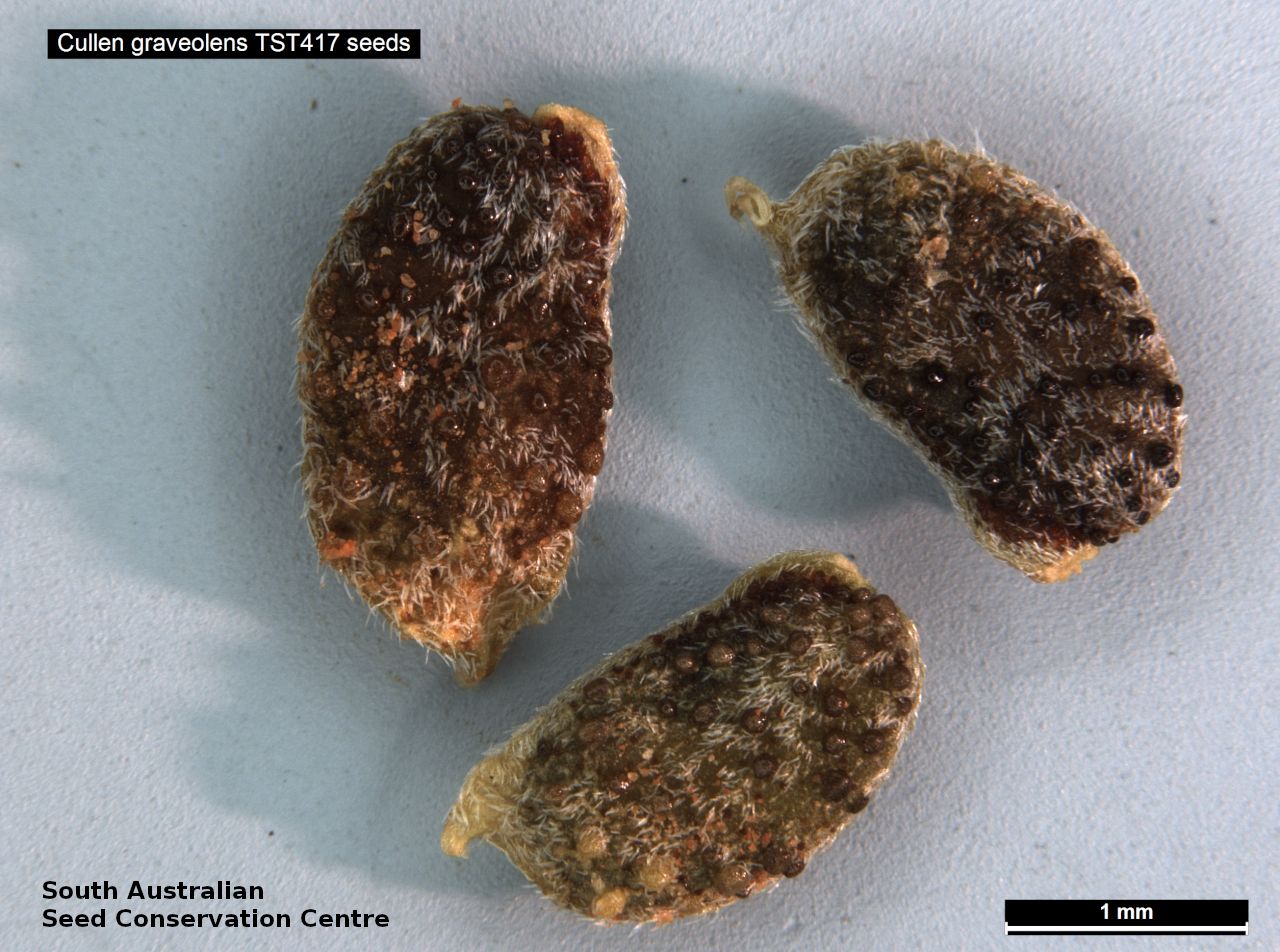
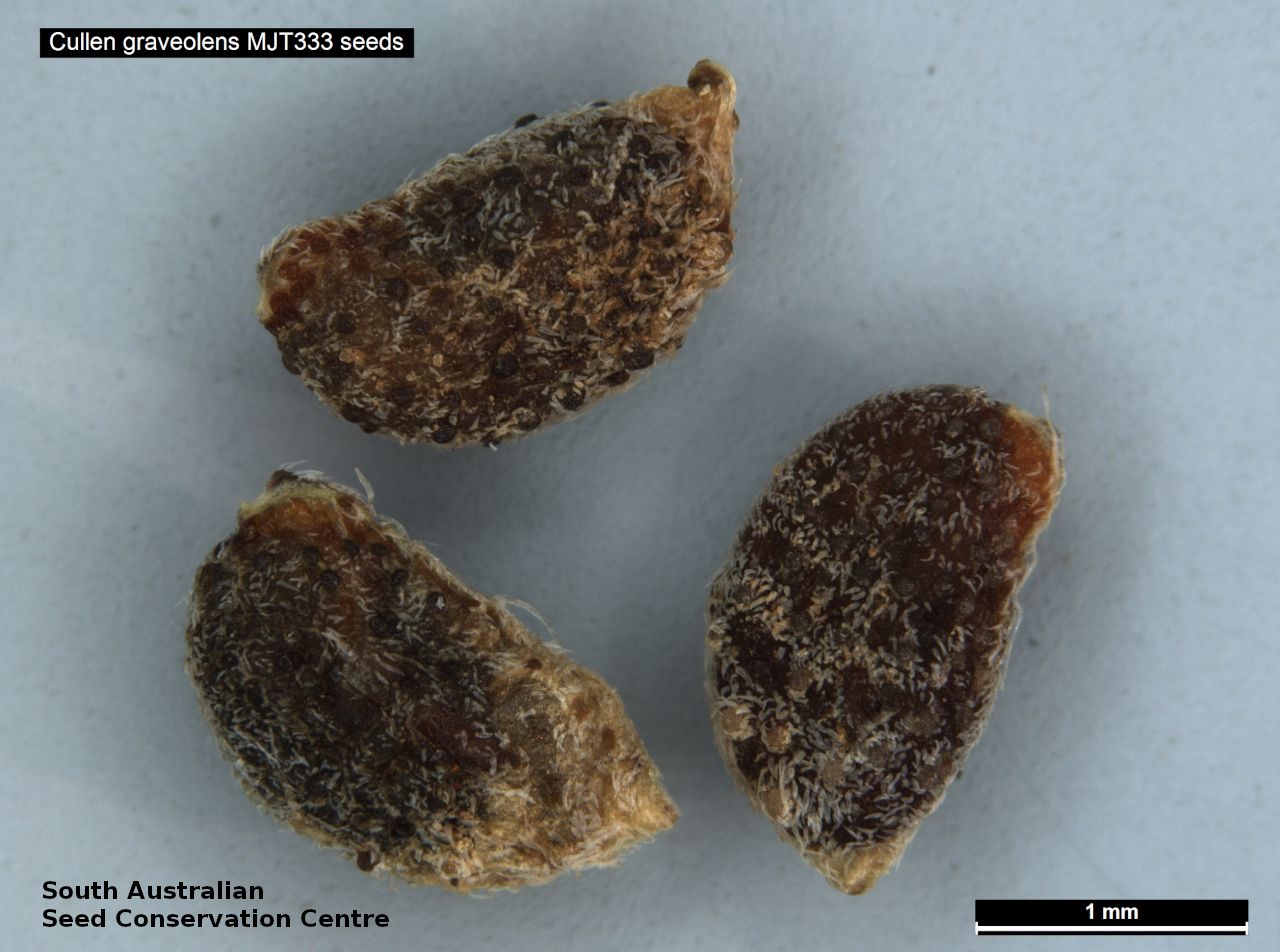
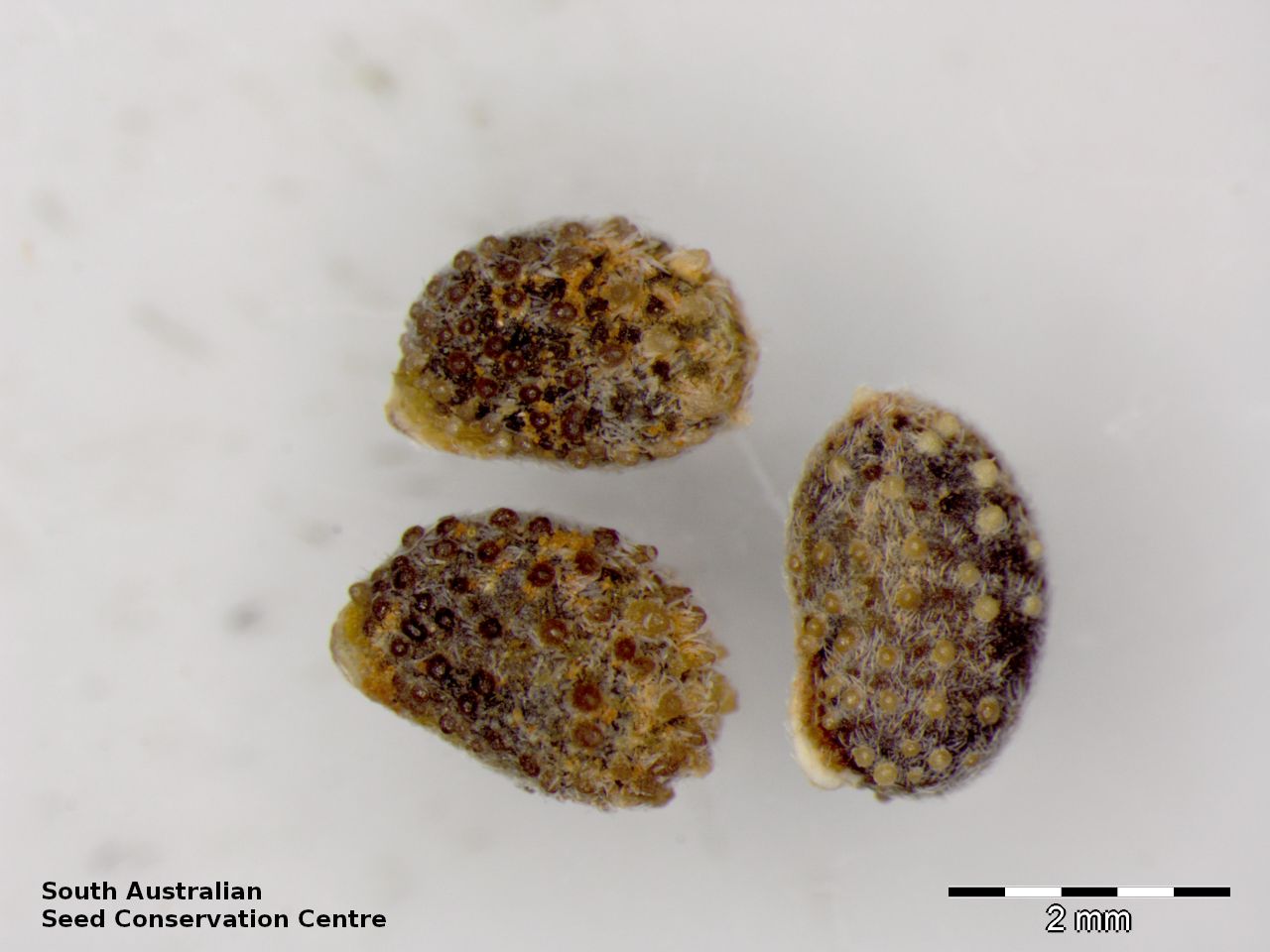
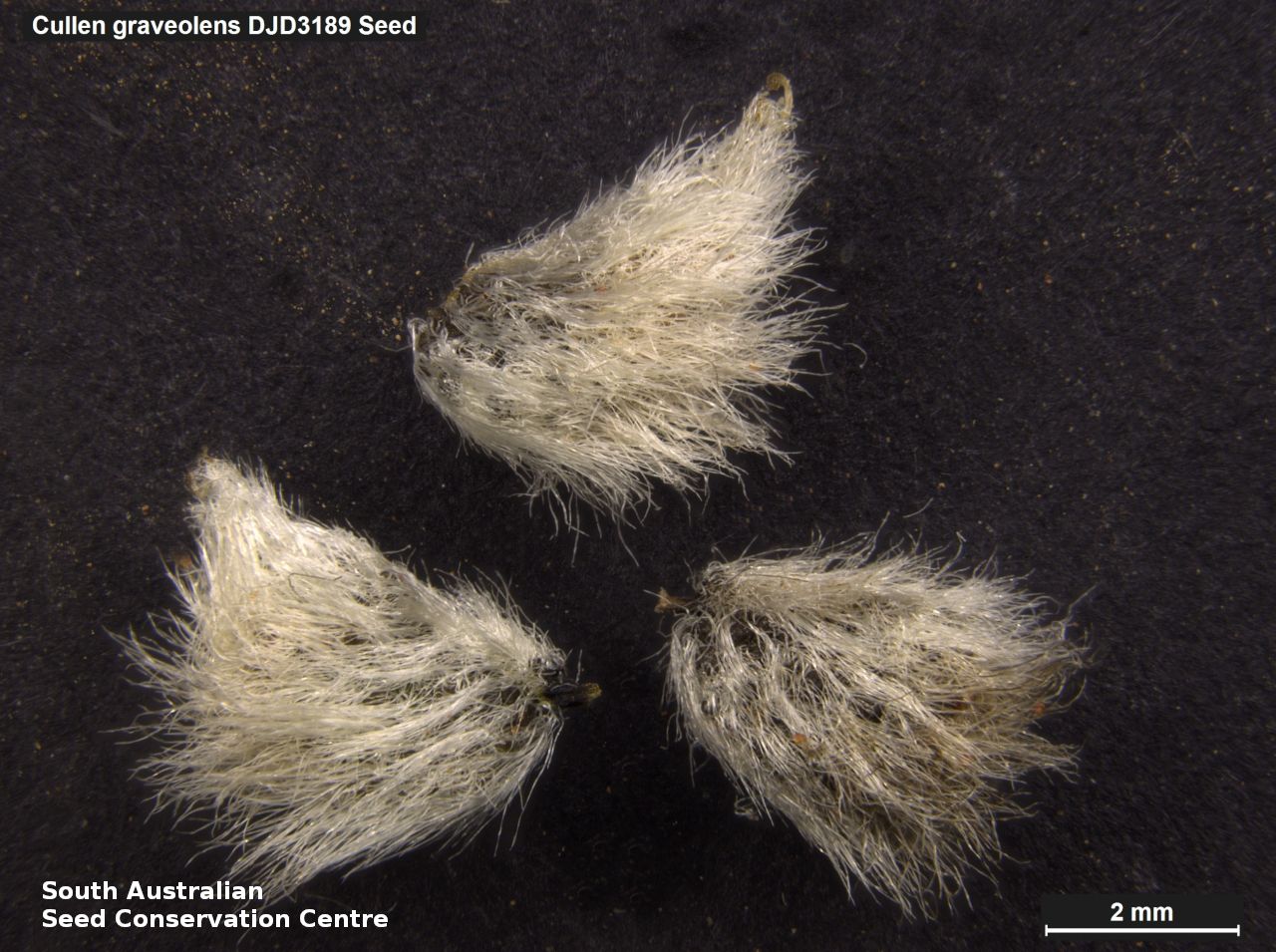
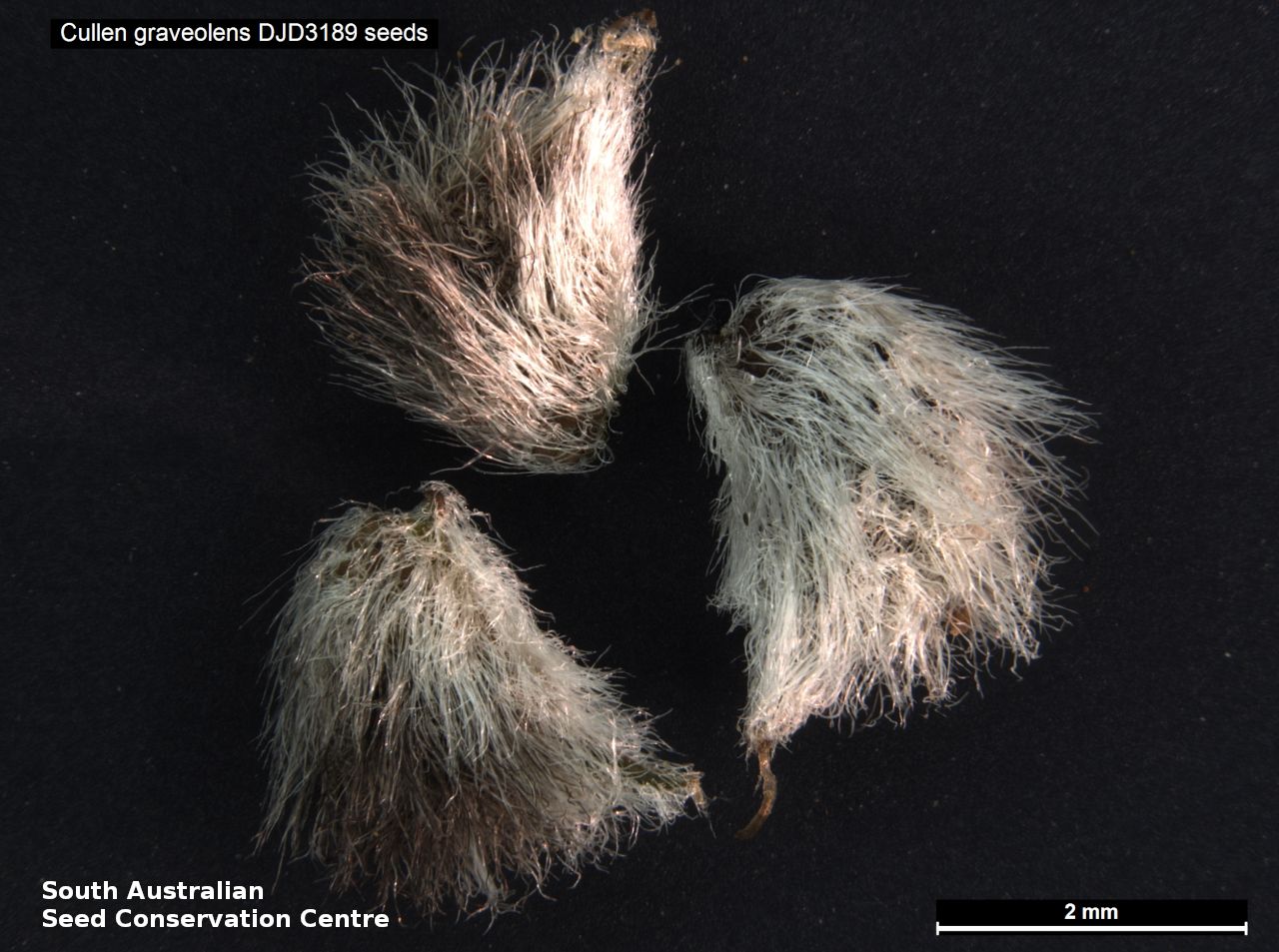
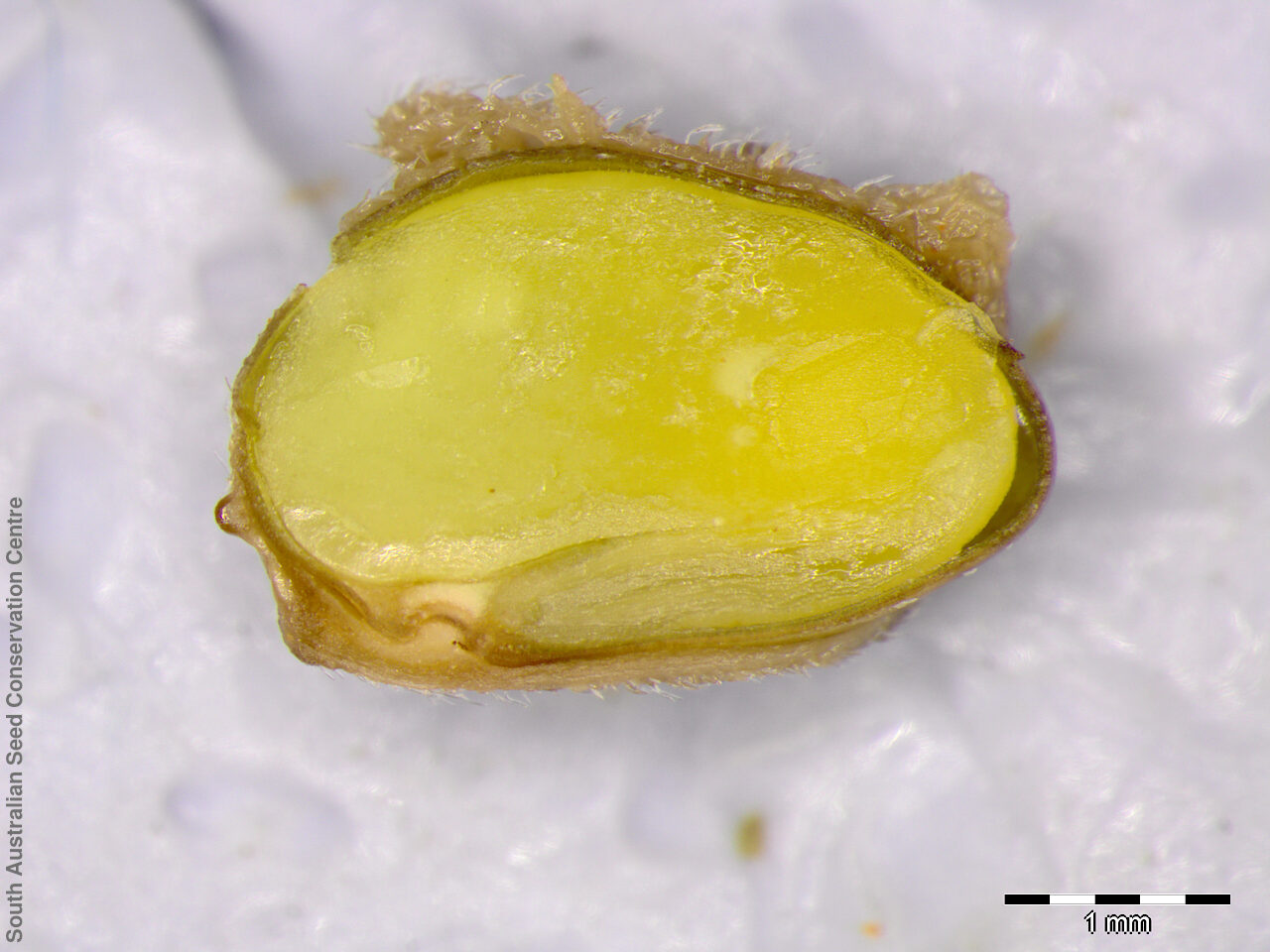
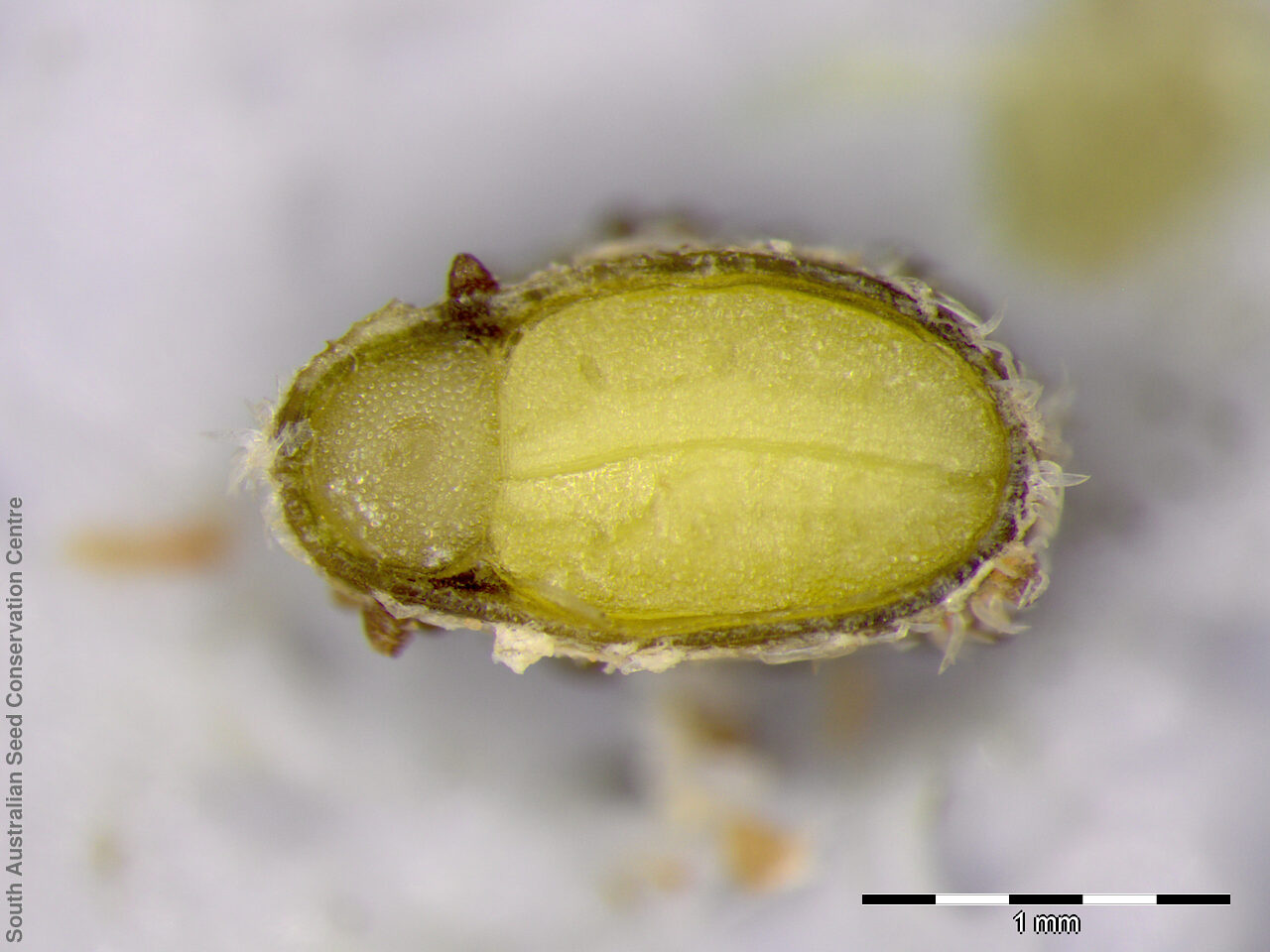

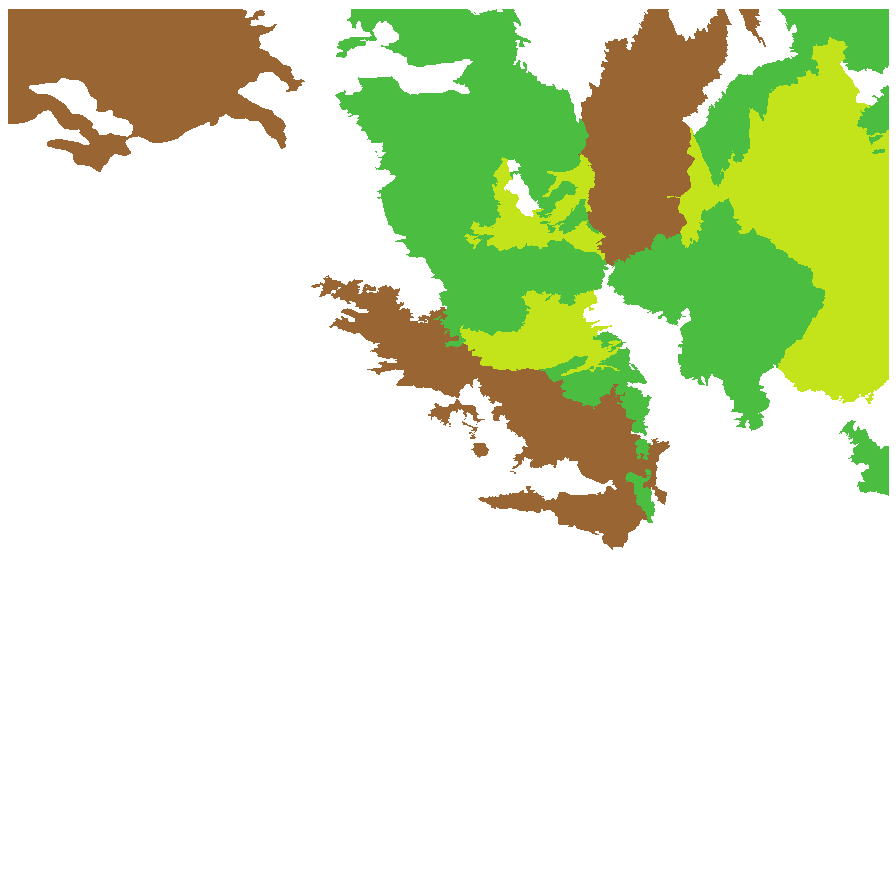
Botanical art
Prior names
Psoralea graveolens
Common names
Native Lucerne
Etymology
Cullen named after William Cullen (1710-1790), a Scottish physician and chemist who lectured at the University of Glasgow on botany, among other things . Graveolens from the Latin 'gravis' meaning heavy and 'oleo' meaning smell, referring to the unpleasant smell of the plant.
Distribution and status
Found in northern South Australia from Port August growing on heavy soils in wet depressions, floodplains and watercourses. Also found in Western Australia, Northern Territory, Queensland and New South Wales. Native. Common in South Australia. Common in the other States.
Herbarium regions: North Western, Lake Eyre, Gairdner-Torrens, Flinders Ranges, Eyre Peninsula
AVH map: SA distribution map (external link)
Plant description
Prostrate, annual perhaps biennial or a short-lived perennial herb with several radiating, finally ascending herbaceous aromatic stems, 10-50cm long; pubescent with strigose brown and white hairs. Leaves long-petiolate, to 7 cm long, with 3 petiolate rhomboid-ovate or rhomboid-lanceolate leaflets, the median one on a 5-7 mm long petiole, the largest to 4 cm long and 1.5 cm wide; irregularly denticulate, with black dots; glabrescent above, underneath with white appressed strigulose hairs, mostly confined to the veins. Flower-spike to 6 cm long with white pea-flowers with purple-dotted keel. Flowering between August and september. Fruits are black elliptical pod to 3 mm long, hairy, dotted all over with wart-like glands, one seed. Seeds are brown bean-shaped seed to 3 mm long and 2 mm wide, covered with round warty projections and short hairs. Seed embryo type is bent.
Seed collection and propagation
Collect seeds between August and December. Collect maturing pods, those that are fat, turning black and contain a brown seed inside, by running your hands along the fruit-spikes. Place the pods in a tray and leave to dry for 1 to 2 weeks or until the pods begin to split. Then rub the dried pods to dislodge the seeds. Use a sieve to separate any unwanted material. Store the seeds with a desiccant such as dried silica beads or dry rice, in an air tight container in a cool and dry place. From one collection, the seed viability was high, at 95%. This species has physical dormancy that needs to be overcome for the seed to germinate (e.g. nicking or softening the seed coat).
| Location | No. of seeds (weight grams) | Number of plants | Date collected | Collection number Collection location | Date stored | % Viability | Storage temperature |
|---|---|---|---|---|---|---|---|
| BGA MSB | 2,300 (9 g) 2,300 (9 g) | 26-Aug-2008 | TST417 Lake Eyre | 20-Jul-2009 | 95% | -18°C | |
| BGA | 1,500 (3.89 g) | 30+ | 3-Nov-2010 | MJT333 Lake Eyre | 1-Jan-2012 | 100% | -18°C |
Number of plants: This is the number of plants from which the seeds were collected.
Collection location: The Herbarium of South Australia's region name.
% Viability: Percentage of filled healthy seeds determined by a cut test or x-ray.